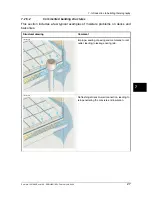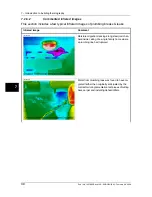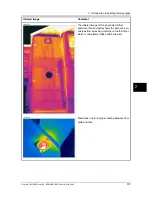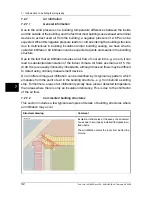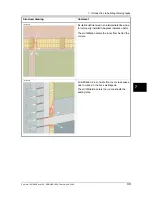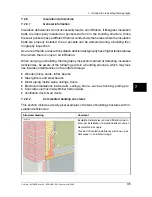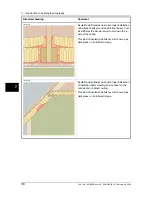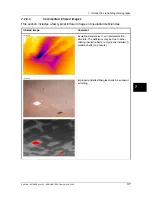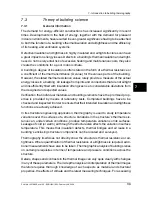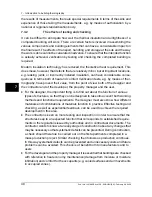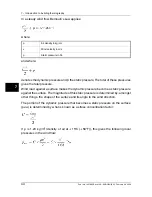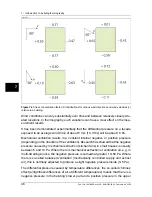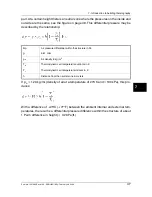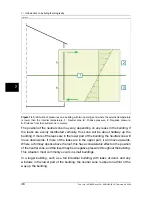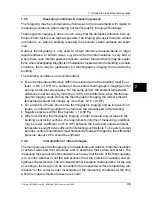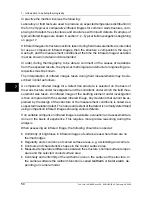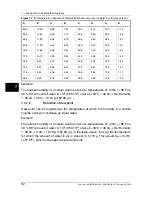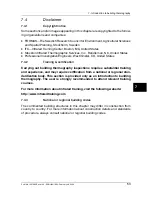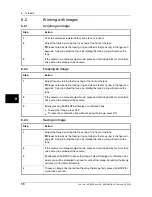
■
For the user the important thing is that the finished product fulfills the promised
requirements in terms of the building’s thermal insulation and airtightness. For the
individual, buying a house involves a considerable financial commitment, and the
purchaser therefore wants to know that any defects in the construction will not in-
volve serious financial consequences or hygiene problems.
The effects of testing and checking a building’s insulation and airtightness are partly
physiological and partly financial.
The physiological experience of an indoor climatic environment is very subjective,
varying according to the particular human body’s heat balance and the way the indi-
vidual experiences temperature. The experience of climate depends on both the indoor
air temperature and that of the surrounding surfaces. The speed of movement and
moisture content of indoor air are also of some significance. Physiologically, a draft
produces the sensation of local cooling of the body’s surface caused by
■
excessive air movements in the occupied zone with normal air temperature;
■
normal air movements in the occupied zone but a room temperature that is too
low;
■
substantial radiated heat exchange with a cold surface.
It is difficult to assess the quantitative effects of testing and checking a building’s
thermal insulation.
Investigations have shown that defects found in the thermal insulation and airtightness
of buildings cause heat losses that are about 20–30% more than was expected.
Monitoring energy consumption before and after remedial measures in relatively large
complexes of small houses and in multi-dwelling blocks has also demonstrated this.
The figures quoted are probably not representative of buildings in general, since the
investigation data cannot be said to be significant for the entire building stock. A
cautious assessment however would be that effectively testing and checking a
building’s thermal insulation and airtightness can result in a reduction in energy
consumption of about 10%.
Research has also shown that increased energy consumption associated with defects
is often caused by occupants increasing the indoor temperature by one or a few de-
grees above normal to compensate for the effect of annoying thermal radiation towards
cooled surfaces or a sensation of disturbing air movements in a room.
7.3.3
Sources of disruption in thermography
During thermography, the risk of confusing temperature variations caused by insulation
defects with those associated with the natural variation in
U
values along warm sur-
faces of a structure is considered slight under normal conditions.
7
Publ. No. 1557882 Rev. a156 – ENGLISH (EN) – February 28, 2006
41
7 – Introduction to building thermography
Содержание ThermaCAM B2
Страница 2: ......
Страница 4: ......
Страница 6: ......
Страница 7: ...ThermaCAM B2 User s manual Publ No 1557882 Rev a156 ENGLISH EN February 28 2006...
Страница 10: ...Reg No Status Designation 29 233 400 Pending U S x Publ No 1557882 Rev a156 ENGLISH EN February 28 2006...
Страница 16: ...INTENTIONALLY LEFT BLANK 1 2 Publ No 1557882 Rev a156 ENGLISH EN February 28 2006 1 Warnings cautions...
Страница 26: ...INTENTIONALLY LEFT BLANK 4 12 Publ No 1557882 Rev a156 ENGLISH EN February 28 2006 4 Packing list...
Страница 28: ...INTENTIONALLY LEFT BLANK 5 14 Publ No 1557882 Rev a156 ENGLISH EN February 28 2006 5 System overview...
Страница 110: ...INTENTIONALLY LEFT BLANK 12 96 Publ No 1557882 Rev a156 ENGLISH EN February 28 2006 12 Maintenance cleaning...
Страница 164: ...INTENTIONALLY LEFT BLANK 18 150 Publ No 1557882 Rev a156 ENGLISH EN February 28 2006 18 Theory of thermography...
Страница 191: ......

